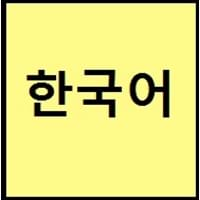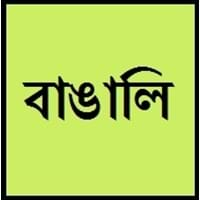Countries
China, Jilin Province, North Korea, South Korea, Yanbian
Andaman and Nicobar Islands, Bangladesh, India, Sierra Leone
National Language
North Korea, South Korea
Bangladesh, India
Second Language
Not spoken in any of the countries
India
Speaking Continents
Asia
Asia
Minority Language
Japan, People's Republic of China, Russia, United States of America
Australia, Canada, Italy, Japan, Kuwait, Malaysia, Maldives, Nepal, Oman, Pakistan, Qatar, Saudi Arabia, Singapore, South Africa, South Korea, United Arab Emirates, United Kingdom, United States of America
Regulated By
The National Institute of the Korean Language
Bangla Academy, Paschimbanga Bangla Akademi
Interesting Facts
- Korean has borrowed words from English and Chinese.
- Korean has two counting systems. First, is based on Chinese characters and numbers are similar to Chinese numbers, and second counting system is from words unique to Korea.
- Bengali language is the World's sweetest language.
- 21st February is celebrated as an International Mother Language day, which is based on Bengali language.
Similar To
Chinese and Japanese languages
Assamese and Oriya
Derived From
Not Available
Sanskrit Language
Alphabets in
Korean-Alphabets.jpg#200
Bengali-Alphabets.jpg#200
Scripts
Hangul
Bengali, Brahmic family and derivatives
Writing Direction
Left-To-Right, Horizontal, Top-To-Bottom
Left-To-Right, Horizontal
Hello
안녕하세요. (annyeonghaseyo.)
হ্যালো (Hyālō)
Thank You
감사합니다 (gamsahabnida)
ধন্যবাদ (dhonnobad)
How Are You?
어떻게 지내세요? (eotteohge jinaeseyo?)
কেমন আছিস? (kêmon achhish?)
Good Night
안녕히 주무세요 (annyeonghi jumuseyo)
শুভরাত্রি (shubhoratri)
Good Evening
안녕하세요 (annyeonghaseyo.)
শুভ সন্ধ্যা। (shubho shondha)
Good Afternoon
안녕하십니까 (annyeong hashimnikka)
ভাল বৈকাল (Bhāla Baikāla)
Good Morning
안녕히 주무셨어요 (An-yŏng-hi ju-mu-shŏ-ssŏ-yo)
সুপ্রভাত (shuprobhat)
Please
하십시오 (hasibsio)
অনুগ্রহ করে (Anugraha karē)
Sorry
죄송합니다 (joesonghabnida)
দুঃখিত (dukkhito)
Bye
안녕 (annyeong)
বিদায় (Bidāẏa)
I Love You
당신을 사랑합니다 (dangsin-eul salanghabnida)
আমি আপনাকে ভালোবাসি (ami apnake bhalobashi)
Excuse Me
실례합니다 (sillyehabnida)
মাফ করবেন (Māpha karabēna)
Where They Speak
South Korea
Bangladesh, Burma, India
Dialect 2
Gyeongsang
Hajong
Where They Speak
South Korea
Bangladesh, India
Where They Speak
China, North Korea
India
Second Language Speakers
Not Available
Native Name
한국어 (조선말)
বাংলা (baɛṅlā)
Alternative Names
Hanguk Mal, Hanguk Uh
Bangala, Bangla, Bangla-Bhasa
French Name
coréen
bengali
German Name
Koreanisch
Bengali
Pronunciation
Not Available
Not available
Ethnicity
Koreans
Bengalis (Bengali people)
Origin
Before 1st century
1000–1200 CE
Language Family
Koreanic Family
Indo-European Family
Subgroup
Not Available
Indo-Iranian
Branch
Not Available
Indic
Early Forms
Old Korean, Middle Korean and Korean
Abahatta, Old Bengali
Standard Forms
Pluricentric Standard Korean, South Korean standard and North Korean standard
Bengali
Signed Forms
Korean Sign Language
Not Available
Scope
Individual
Individual
ISO 639 6
Not Available
Not Available
Glottocode
kore1280
beng1280
Linguasphere
45-AAA
59-AAF-u
Language Type
Living
Living
Language Linguistic Typology
Subject-Object-Verb
Not Available
Language Morphological Typology
Agglutinative
Not Available
Korean and Bengali Greetings
People around the world use different languages to interact with each other. Even if we cannot communicate fluently in any language, it will always be beneficial to know about some of the common greetings or phrases from that language. This is where Korean and Bengali greetings helps you to understand basic phrases in Korean and Bengali language. Korean word for "Hello" is 안녕하세요. (annyeonghaseyo.) or Bengali word for "Thank You" is ধন্যবাদ (dhonnobad). Find more of such common Korean Greetings and Bengali Greetings. These greetings will help you to be more confident when conversing with natives that speak these languages.
Korean vs Bengali Difficulty
The Korean vs Bengali difficulty level basically depends on the number of Korean Alphabets and Bengali Alphabets. Also the number of vowels and consonants in the language plays an important role in deciding the difficulty level of that language. The important points to be considered when we compare Korean and Bengali are the origin, speaking countries, language family, different greetings, speaking population of these languages. Want to know in Korean and Bengali, which language is harder to learn? Time required to learn Korean is 88 weeks while to learn Bengali time required is 44 weeks.





